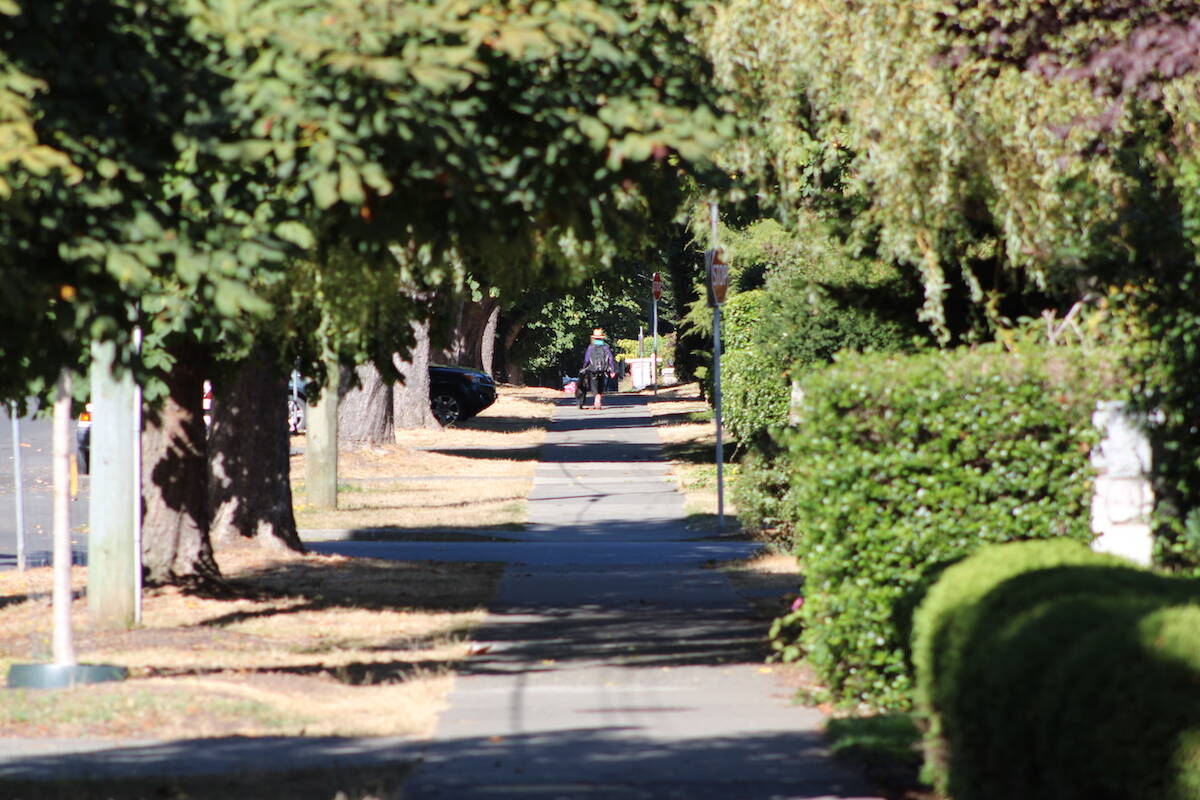Wealthier Canadians and those with a bachelor’s degree are more likely to have greenspace in their neighbourhood than millennials and lower-income people, according to a new study.
University of British Columbia researchers looked at 31 Canadian cities and used satellite imagery along with census data on income, education level and race and ethnicity to inform the study.
“We know there are a lot of benefits urban vegetation can provide to urban inhabitants so we wanted to see if they’re equitably distributed throughout cities,” Jessica Quinton, a UBC PhD student specializing in environmental justice and green equity, told Black Press Media.
The issue has been looked at in the United States, but there hasn’t really been a large-scale study done in Canada, Quinton said. The researchers wanted to see if certain socio-economic and demographic factors played into how much greenspace availability.
The researchers found it sticking to see how much results varied between cities, Quinton said, but it made sense given the diversity across the country. Victoria, with its lower density in much of the city, showed a more even and equitable distribution of greenery than other cities.
About a third of the cities have more vegetation in areas associated with higher household incomes, the study found.
A third also showed areas with higher levels of education led to that increased amounts of greenspace. Roughly 10 cities also had less abundance of greenery in areas with greater percentages of millennials.
Quinton said those with higher incomes are usually homeowners who have more control over greening their property, versus renters. More trees also help boost property values, so a fuller canopy is more common in higher-paid neighbourhoods. Wealthier folks also have more resources to politically or financially leverage greening on nearby public property, Quinton said.
“We hope that (cities) will take that information and look at their lower-income neighbourhoods and think about ‘Well how can we provide more vegetation on public property here.’”
Millennials tend to live in more downtown areas that are close to amenities, but often have less space for vegetation, Quinton said.
Another factor is those central areas are often where more affordable housing options are.
As cities densify to meet housing needs, Quinton said they can utilize green options like linear parks that can wind through populated areas, retaining mature trees when possible and greening roofs and facades.
The researchers hope their study will be used to make urban greenspace more equitable, especially given the vital role plants will play in mitigating heat waves and weather events. The urban forest also improves mental health, benefits stormwater management and provides recreation.
RELATED: B.C. launches free day-use passes for 6 provincial parks amid COVID-19 surge
RELATED: Vancouver Island trail access depends on jurisdiction and use

